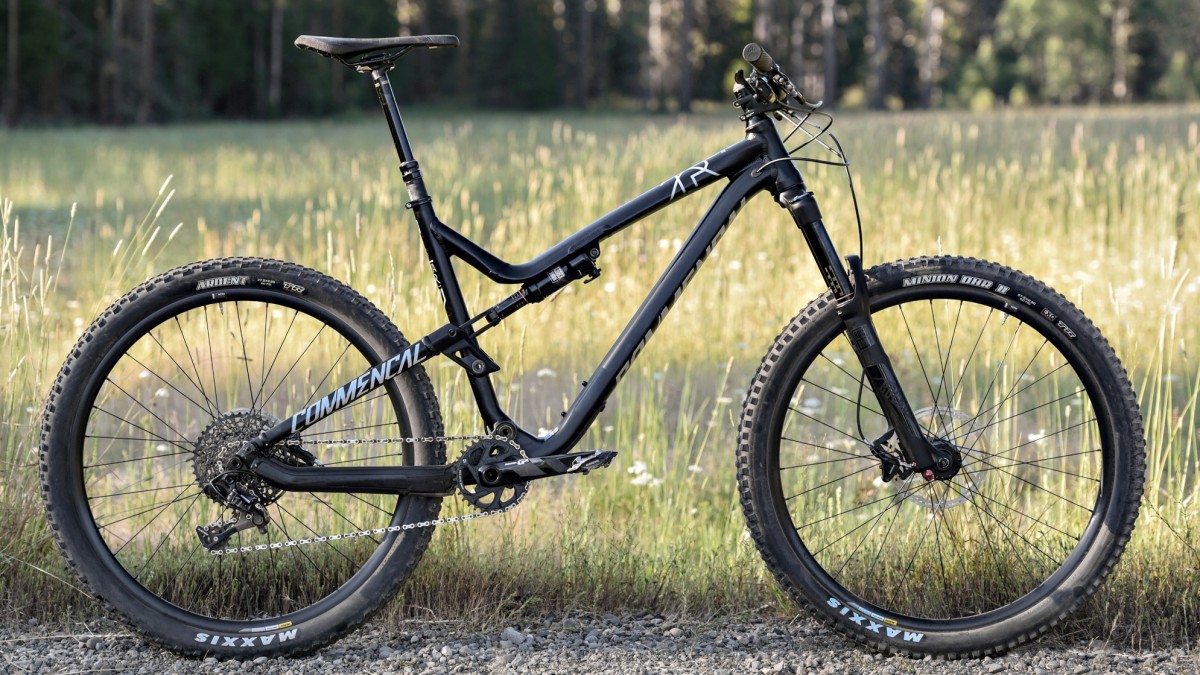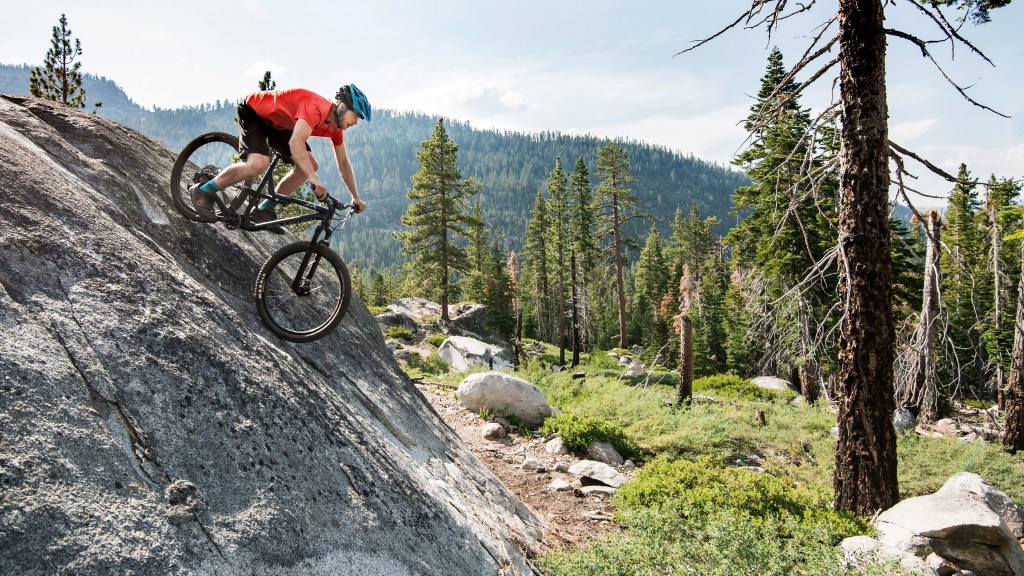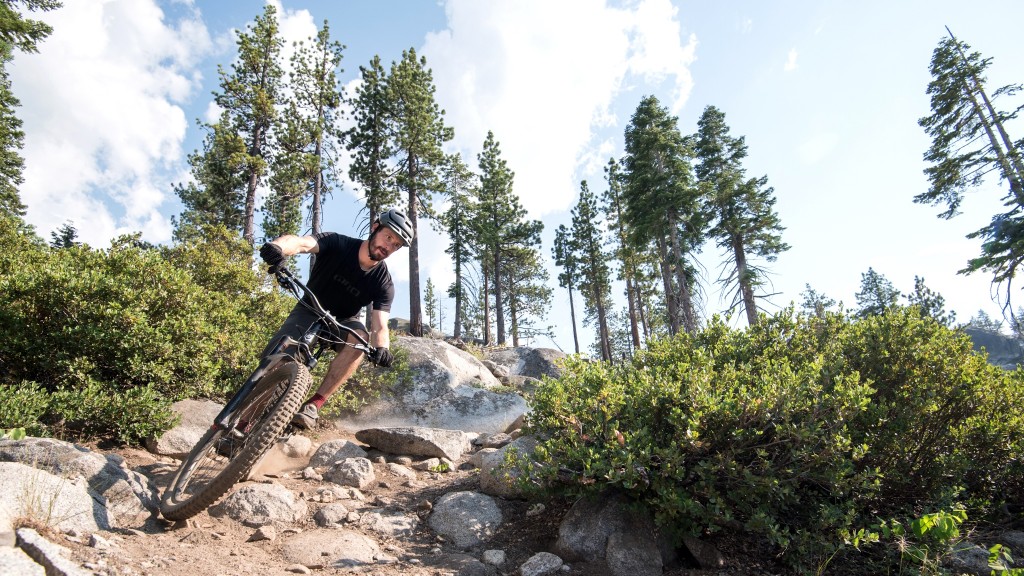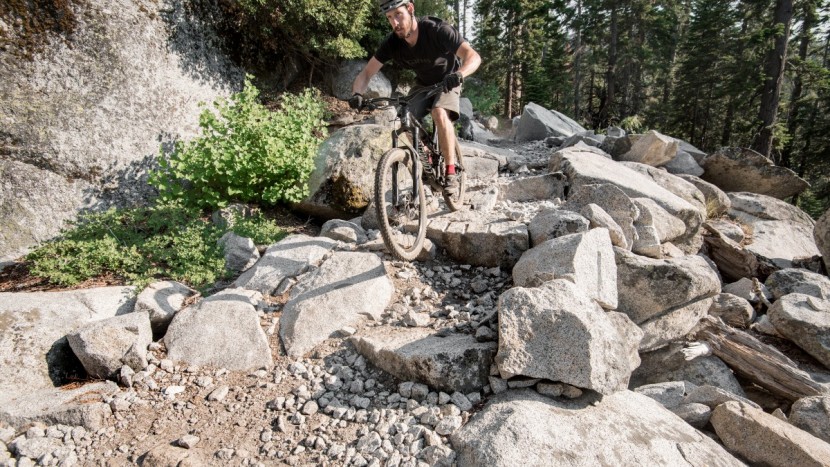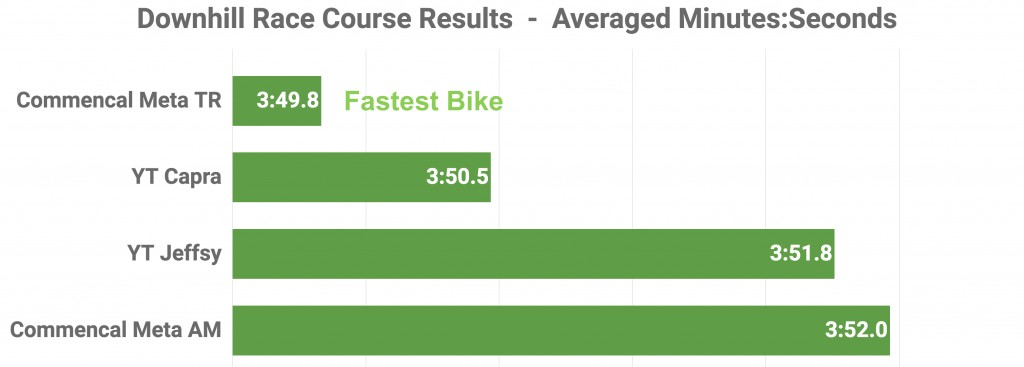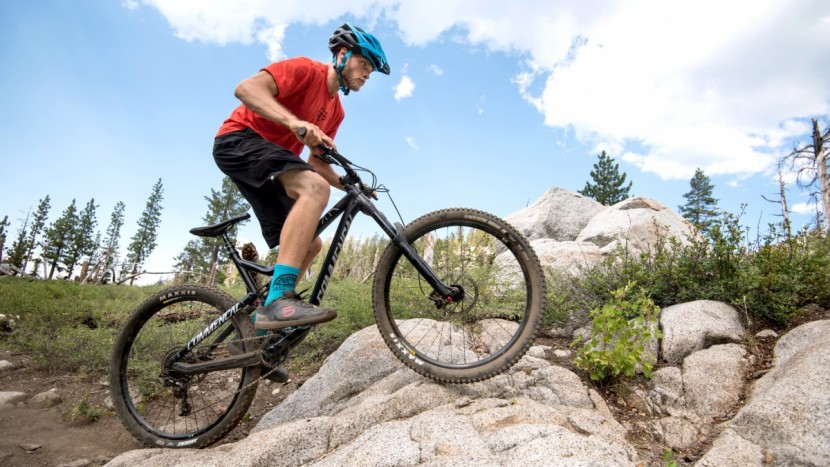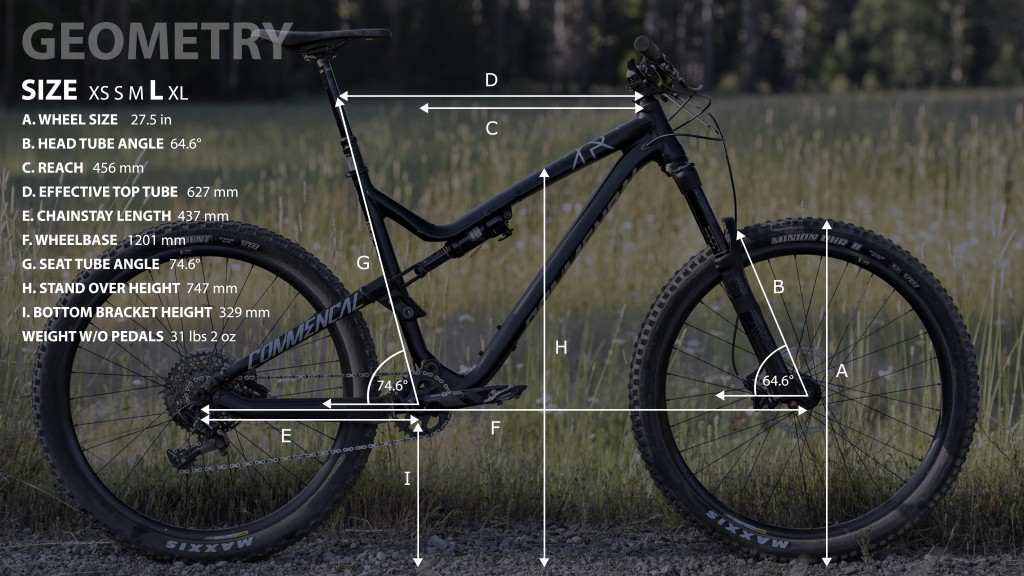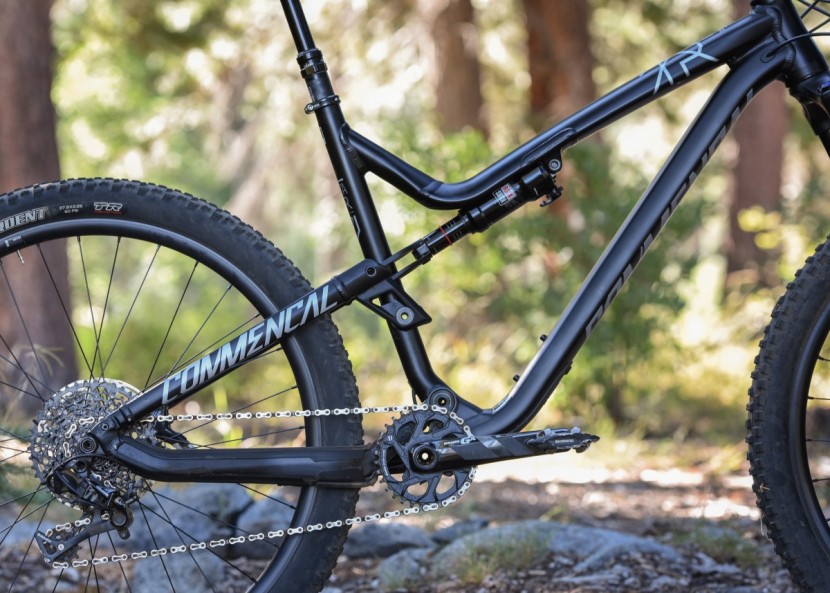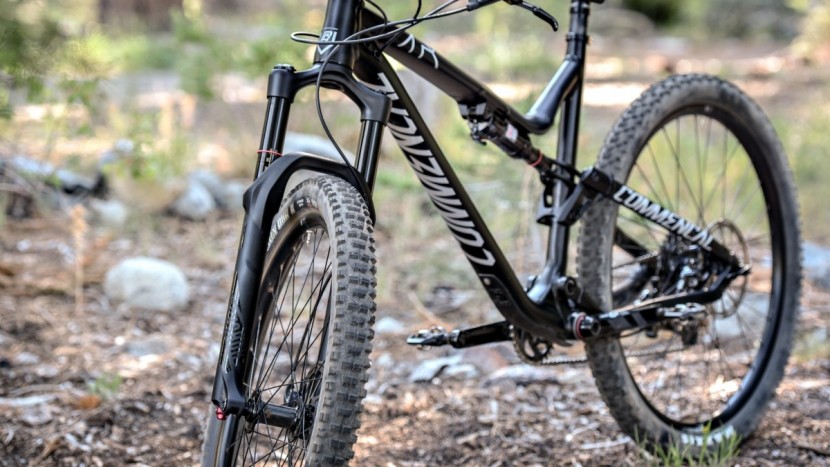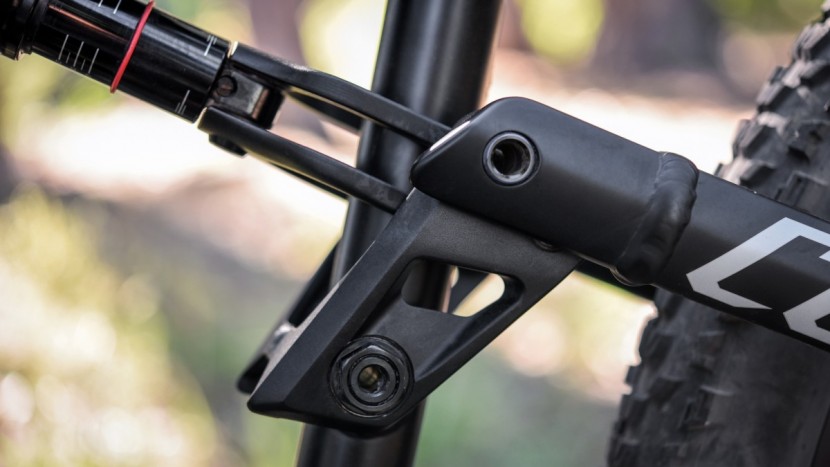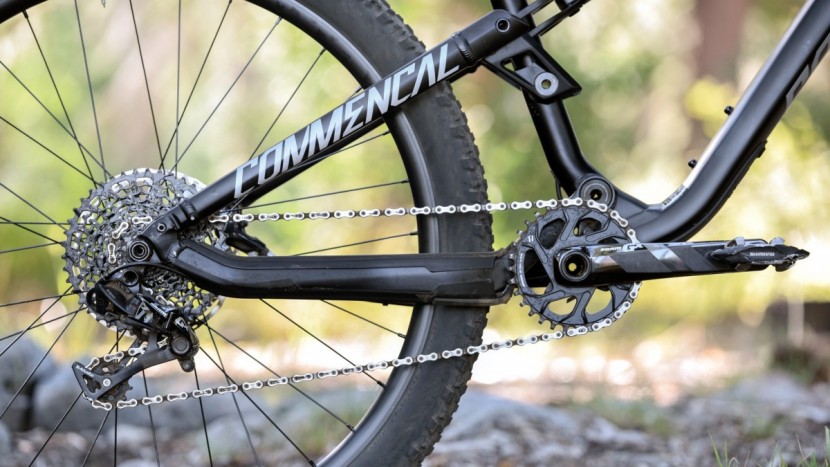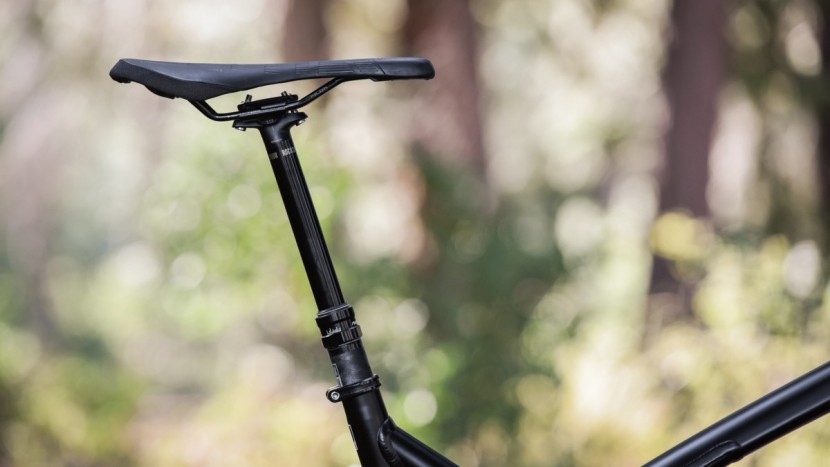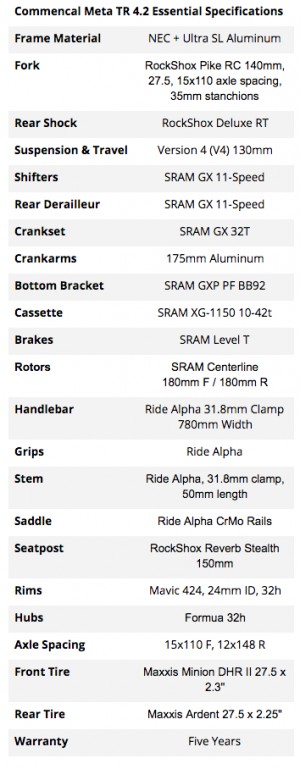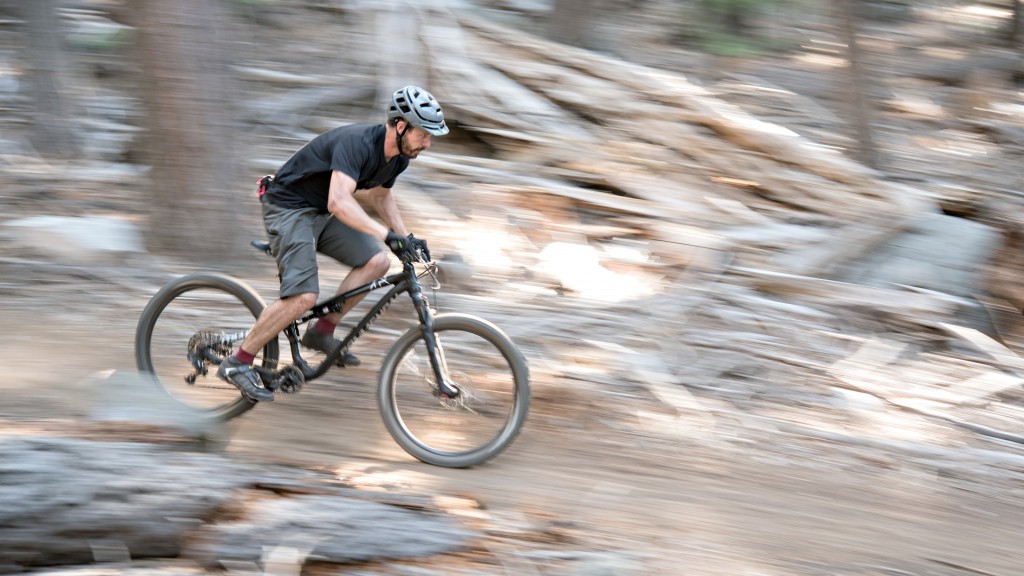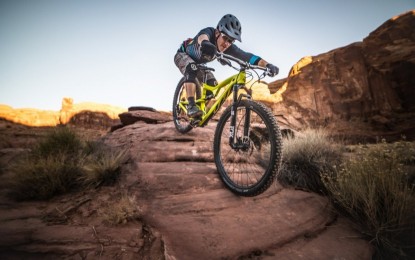Commencal Meta TR 4.2 Essential 2017 Review
Our Verdict
Our Analysis and Test Results
2017 Analysis and Test Results
The Commencal Meta TR is an excellent value. It's fun-loving and proficient performance comes with a stellar build kit and a price tag that is frighteningly easy to rationalize. We've ridden more modern, sophisticated designs, like the Ripley or Hightower, but their gains in performance over the Meta TR are subtle and pricey. This bike does it all, really well. This is a rare case in the MTB world where you're getting more than you pay for.
Fun Factor
The Meta TR is a fun-loving rally car with an aggressive side. The Meta TR takes climbing efficiency, mixes in some slack angles and a spritely feel. The result? An incredibly fun trail bike that is clearly influenced by its longer travel sibling, the Meta AM. This 130mm travel sled has the chops to make long-travel enthusiasts happy while maintaining a trail bike personality.
The Meta TR handles like a short travel bike with a tasty aggressive flavor. The Meta TR copes with speed remarkably well and responds immediately to rider input. This bike operates with precision and shows that little, 27.5-inch wheels still offer superior handling. You can slice and dice your way down the trail with ease and without gargantuan amounts of strength. This is very fun.
There is a movement in the bike industry backing away from the enduro race bikes that have become incredibly popular in recent years. Long-travel rigs boasting 160mm+ travel with reasonable climbing skills were introduced and the enduro craze took off. A few short years later, people have realized how hard it is to tap into the full potential of these ultra-aggressive bikes. Enduro bikes often need to be driven very hard to unlock their lively feel. As a result, many riders have found it is more fun pushing a mid-travel bike to the limit instead of utilizing 60% of an enduro bike's capabilities. The Meta TR V4.2 is a prime example of this sensible trend. It has a wild enough personality to handle high speeds and trail-side shenanigans, but you can also find its high-end limit.
We found the Meta TR to be quite effective on our favorite high-speed jump line. It is balanced in the air and carries excellent speed through berms into the jumps. Pumping and scrubbing whoops and rolls is effective and a joy aboard this ninja. Carrying more speed with less effort is fun.
Too good to be true? Perhaps. The tire choice on the Meta TR V4.2 is suspect at best. The 2.25-inch Maxxis Ardent in the rear is a recipe for disaster. We found it to be decent in the sandy conditions that are so common in Tahoe. When you encounter loose-over-hard conditions, things get ugly. Under braking forces at speeds, the rear end wants to skid out at every opportunity. Even calculated application of the brake needs to be cautiously executed to keep the back end in place. Riders who reside in wet climates will especially loathe the Maxxis Ardent as it is abysmal on slick roots and rocks. A set of 2.5-inch tires would do wonders for the Meta TR.
We scored the Meta TR among the best in the test for its high fun factor. The shorter-travel and rip-roaring Ibis Ripley is a more playful ride. Santa Cruz's aggressive trail-rig, the Hightower matches the Meta TR's joyful level of mountain-wide proficiency. The Hightower is not as lively or nimble as the TR but has a higher threshold for gnar.
Downhill Performance
The Commencal Meta TR descends with confidence and precision. While the two enduro bikes in this test are hard-charging heavy-hitters, this bike takes a more nimble and maneuverable approach. This bike remains calm at speed, but a healthy diet of burly rocks or roots will disrupt this 130mm travel machine. On fast, tight, or twisty trails, the Meta TR V4.2 operates with a responsiveness that is unrivaled among our test bikes. This bike's handling skills drew comparisons to the razor-sharp Ibis Ripley LS
Rider position is comfortable and spacious when aimed downhill. The longer top tube offers plenty of breathing room. Riders who may be on the small side of a large frame might want to consider a shorter stem or narrower bars to compensate for this length. Our 6'1" - 6'2" testers found the large frame to be a perfect size for yanking on the bars to engage in frolicsome behavior.
The Meta TR is energized on the descent. While the longer travel test bikes have the right angles and travel amounts to get ultra-aggressive, they lack the ninja-like personality of the TR. This stealthy bike has a distinct slice and dice personality and zippy outlook on life. Descending through rock gardens leaves riders with options. You can navigate sneaky lines with the precise handling, or you can use the playful attitude to pop right over obstacles. The Meta TR is less of a sledgehammer and more of an accurate tack hammer.
There is no arguing that this bike excels on fast descents. Hammering the pedals out of a corner to regain speed is very effective. Riders who live near flow trails or rolling hills will have a blast aboard this mid-travel rocket ship. Jump lines, berms and high speeds are chuckle-inducing, but the bike is also extremely effective in tight spaces. The TR is a beautiful option for riders who live in areas with a lot of narrow and tight trails through dense forest.
The slack front end of the TR4.2 bestows excellent stability at speed and its relative heft only adds to the planted feel. Building more and more speed really taps into this bike's aggressive geometry and the slack head tube angle starts to pay dividends. While there isn't a speed limit on smooth and fast terrain, there is certainly one in the rocks. After all, this bike only has 130mm of travel. It gets shaken when the going gets too rough. The geometry doesn't give you the over the bars feeling, but you receive a loud reminder that you aren't riding an especially squishy bike. We found square edge hits were particularly troublesome for the Meta TR. The suspension seemed to lock up as if it were confused. It should be noted that very few bikes react to this situation well, but our test bike was particularly jarring in these situations. As a result, we also experienced a high amount of flat tires on our Commencal bikes which were outfitted with tubes.
We timed the Meta TR against three other consumer direct options to find out which is the fastest on our downhill course. The Meta TR edged out the second place 2017 Capra and the third place 2017 Jeffsy. Bringing up the rear was the 2017 Meta AM. This trail-oriented downhill course was approximately two minutes and 45 seconds long and all bikes were within two seconds of one another.
The Meta TR scored highly for its balanced downhill performance. The aggressive Yeti SB5.5 and Santa Cruz Hightower LT dominated this category. The Santa Cruz Hightower is a more capable bike but sacrifices some of the precision of the Meta TR. The 150mm travel Rocky Mountain Altitude is a balanced and easy-going descender.
Climbing Performance
The Meta TR is an able-bodied climber that motivates the rider to keep pushing. The power transfer is efficient and the uphill handling is on point. Despite the slack front end, this mini enduro bike navigates up technical sections with ease. While this bike is no featherweight, its heft is tucked away intelligently, and riders don't feel like they are pulling a big bike. The stiff gear ratio leaves something to be desired and a grippier rear tire with some more bite would only help climbing abilities on mixed surfaces.
The seated climbing position on the TR is comfortable and spacious. Much like its big brother, the Meta AM, our test bike had plenty of room in the cockpit to distribute rider weight. Thanks to the slack front end, rider weight is shifted rearward. This puts riders in less aggressive pedaling position but it also adds weight and traction to the wimpy rear tire. Regardless of body position, the Meta TR V4.2 feels efficient. Power is effectively transmitted and energy is utilized well.
The 32:42 gear ratio found on all of our test bikes is a serious source of frustration. As you would expect, pedaling in the Sierra Nevada Mountains requires extraordinary amounts of climbing. This stiff gearing requires constant rider input and exertion to keep it up to speed. The Meta TR is the most comfortable test bike with this gear ratio. The combination of a moderate pedal position, slightly lighter weight and effective pedal platform are key factors. If we didn't know better, we would have thought we were pushing a 30-tooth front ring on the TR.
This mid-travel bicycle is capable of climbing in the open position. On road or double track sections, we recommend firming the shock up to maximize power transfer. On singletrack, we largely prefer the traction provided by the open setting. Pedal bob is a non-issue aboard the TR 4.2 and the number of pedal strikes are reasonable and largely limited to ultra-techy pitches.
There is no mistaking the Meta TR for a light bike. That said, it doesn't feel particularly bulky when climbing. The weight seems to be tucked away in sensible places. Steering this trail bike uphill is pleasant and responsive. Navigating an uphill turn is a free-form process. This bike does not demand a well thought out game plan and it is easy to change your lines mid-climb. The wheelbase feels slightly longer than some other 130mm travel bikes. As a result, it takes a little oomph to pull this bike up behind you when stepping up a rocky shelf. That said, climbing on the Meta TR is energizing and leaves you with enough in the tank to give it the extra blast of power.
We scored the Commencal TR well for its swift and comfortable climbing abilities. This put the TR solidly in a pack of very good climbers. The Santa Cruz Tallboy and Ibis Ripley LS ran away with this category. The Rocky Mountain Altitude and Santa Cruz Hightower balance uphill and downhill skills beautifully and both scored highly for impressive climbing abilities.
The Meta TR was the second fastest climber in our uphill time trails, coming in just behind the wagon-wheeled YT Jeffsy. The Capra came in third place while the Meta AM was the slowest climber. Our timed climbing trail was approximately four minutes long and all bikes were within five seconds of one another.
Ease of Maintenance
Performance, price, and components are all important to consider when buying a bike. Let us not forget the service these bikes require to run smoothly. Certain designs are inherently easy or difficult to work with. Then you've got to consider the suspension, drivetrain, brakes, and dropper. We ranked the Meta TR's maintenance ease below, check out our methods in the trail bike review
Commencal uses a fairly straightforward pivot system with simple bearing and axles. We love it. However, the aluminium on aluminum clevis joints can really take a beating and the main pivot on this bike is on the scrawny side. The Rockshox suspension components have more frequent recommended maintenance intervals then their Fox counterparts, lowering the bike's ease of maintenance score. Likewise, SRAM brakes are harder to work on than Shimanos and use corrosive fluid. Shimano uses simple mineral oil.
Frame Design and Suspension Overview
The Meta TR V4.2 is constructed with an aluminum frame and 130mm of rear wheel travel. The suspension system is called the V4 Suspension Platform. This suspension design relies on two pivots, one is slightly forward of the bottom bracket center and a second pivot is located above and forward of the rear axle. A rocker link is located on the seat stay roughly halfway up the seat tube. This suspension design is supposed to be fairly progressive. It's comfortable and it nicely balances a plush feel with a very supportive mid-late stroke.
The Meta TR is outfitted with a measured 64.6-degree head tube angle. We measured our large test bike to have a 627 mm effective top tube and 437mm chainstays to create a balanced 1201mm wheelbase. The head tube angle is definitely slack compared to other 130mm travel trail bikes and creates a very stable platform for descents. The 74.6-degree effective seat tube is middle-of-the-road and creates a comfortable climbing position. This aluminum mid-travel trail bike hit the scales at 31 lbs 2 oz.
Build
The TR V4.2 Essential has well-defined ride characteristics and we loved its on-trail performance. The build specifications are very impressive and complement the intended riding style extremely well.
Fork and Shock — The Meta TR V4.2 Essential sports a 140mm RockShox Pike RC. This solo air fork provides a predictable and stiff front end. The 140mm travel number is a nice choice. There was little conversation about the fork spec on this bike during testing. That is a positive.
A RockShox Deluxe RT metric shock is fitted to the back end of this bicycle. This two-position shock performed dutifully and fit the intended application very well. The shock does not allow for high-speed compression adjustment, which controls rapid-fire hits. It does have low-speed compression for isolated big hits. Rebound is the only other external adjustment.
Wheels and Tires — Our test bike rolled on Mavic XM424 rims laced to Formula hubs. The Mavic rims, while narrow at a 24mm inner diameter, are properly spoked with a 32-holes drilling. The Formula hubs have a definite dead spot before the hub engages. The hub performance was not impressive.
Our Meta TR was outfitted with a Maxxis DHR II 2.3-inch tire in the front. While there is definitely sufficient bite with this tire, wider rubber is better. A 2.25-inch Maxxis Ardent is mounted to the rear. The Ardent is miserable in loose-over-hard conditions and any scenario involving moisture. In addition, a 2.25-inch tire has no place on a trail bike in this day and age where 2.5-inch rubber is commonplace.
Groupset — The Essential Build is powered by a respectable SRAM GX1 drivetrain. The 32-tooth chainring is definitely burly, but shifting remained crisp throughout our testing. GX1 is reliable even though it's not a sexy specification.
SRAM Level TL brakes performed stopping duties on our test bike. While power is sufficient for a trail bike, the lack of an external reach adjustment on the lever is disappointing.
Handlebars, Seat, and Seatpost — The cockpit on our test bike is fitted with Ride Alpha components. Ride Alpha is an in-house brand of Commencal. The 780mm bars are wide without being absurdly wide and 50mm stem is short without being twitchy.
The RockShox Reverb internal dropper post is still one of our favorites. This post has an excellent feel when it is functioning properly. Our test post worked flawlessly. The Ride Alpha saddle is fine and caused us no issues.
Build Options
On a tight budget? The Meta TR 4.2 Origin is the entry-level model. The Origin retails for $2,549 (sells for $2,299) and is powered by a SRAM NX 1x11 drivetrain. Suspension is provided by a slimmer RockShox Revelation fork and the same Deluxe RT shock found on our test bike.
Value
The Commencal Meta TR 4.2 Essential provides a spirited and versatile ride. More importantly, it is an extremely fun bike. While the Meta TR is slightly more expensive than the YT Jeffsy, we feel it is a far superior ride. Therefore, we have deemed this bike a supreme balance of the price to performance ratio.
Suggested Upgrades
With such a strong build kit, the Meta TR is ready to rip from day one. That said, a nicer wheelset with better hub engagement and wider rim profile would only help. Faster hub engagement would no doubt enhance this bike's already quick and zippy attitude. In addition, we would add some wider rubber. A 2.5-inch Maxxis Minion DHF up front would be a fantastic option, this opens the door to move your 2.3-inch Minion DHR II from front to rear.
Conclusion
The Meta TR V4.2 is nimble and comfortable on the vast majority of trails. This murdered-out 130mm trail bike can hustle uphill swiftly, leaving you with plenty of energy for the descent. Downhill skills are very confident, handling is sharp, and high-speed flow trails supremely fun on the Meta TR. Riders are reminded that they are on a mid-travel trail bike when the going gets too nasty. Impressive price point, great components, and a fast, spirited, ride… we call this bike a winner.


